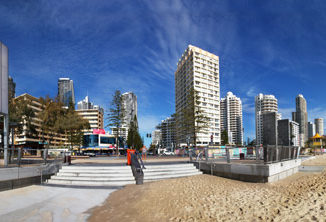Over the last year there have been several terrorist incidents that have seen the loss of life in our cities and due to this acts we have seen governments have turned to security experts, police departments and intelligence experts to offer advice on how to make cities safer. This is a continuation of the ever increasing change in the way we live our lives over the last few decades as we have secured airports, train stations, bus stations, border crossings and tourist attractions.
Due to recent events the Australian government has sort advice from security experts and recently, the Prime Minister of Australia launched the Australia’s Strategy for Protecting Crowded Places from Terrorism. A document which seeks to “…assist owners and operators to increase the safety, protection and resilience of crowded places across Australia.”. This strategy is similar to the Crowded Places Guidance recently published by the National Counter Terrorism Security Office(UK) and the FEMA – Site and Urban Design for Security.
For landscape architects these guidelines and tools are important to understand as the new Strategy for Protecting Crowded Places states that ”Crowded places do not have to be buildings and can include open spaces such as parks and pedestrian malls.”. This encompasses a large number of spaces within cities that are designed by landscape architects. There is a need to review, plan and design for the possibility for attacks in crowded spaces, however before we forever change our cities we need to evaluate what this means for daily life of our its citizens. Do these changes create safer spaces or do they seek to make spaces feel less appealing and a daily reminder of the security threat that may exist? Anecdotally, views differ on sense of feeling safer with more bollards as was seen recently in Melbourne, Australia when large concrete blocks were placed at the entrances to pedestrian malls and a major train station.
Creating spaces that impede movement is counter intuitive for landscape architects who are often spending time decluttering cities from layers of design choices made by various departments over years and decades. How do we design spaces that respect their context and create a sense of place that people wish to experience whilst not overlaying a series of security elements that appear out of place? We have the many elements that we can use including terrain, walls, trees, reinforced seats, planters, bollards, rails, fences, art, as deterrents and barriers against vehicles and terrorist acts. Using our design skills we can still create spaces that do not imitate armies of bollards matching down streets edges.
These guidelines and design requirements also provides a catalyst for landscape architects to take the lead on looking forward to the future to provide guidelines for the design of public spaces in the future. What are the options for cities of the future?
Could we see the following realised in the future?
- pedestrianised car/vehicle free city centres linked underground by public transport (similar to the satellite city near Chengdu China planned by Adrian Smith + Gordon Gill Architecture)
- automated public and shared transport with “last mile” on bicycles
- exclusion zones for non-automated vehicles (similar to congestion zones currently in place in London
Some of these options are decades away and others could be implemented in the next 2-10 years depending on the willingness of designers, cities and their people to embrace change.
There are other ways besides vehicles that terrorist attacks can occur, however we have to stay positive and look to the future of creating liveable cities. There are various transitions that cities will go through, currently there maybe an immediate need for cities to install physical elements, but over the coming decades we should look to plan and design to look toward designing safer crowded spaces safer through the design tools available (physical, technological, psychological).
We need to seek out better ways to create cities that allow for safe crowded places, in which we can all gather to hold events and celebrate life as a community.
Article Written by Damian Holmes is the founder and Editor of WLA. He is also a registered Landscape Architect and has over 15 years experience as a landscape architect in Australia, Canada and China.



